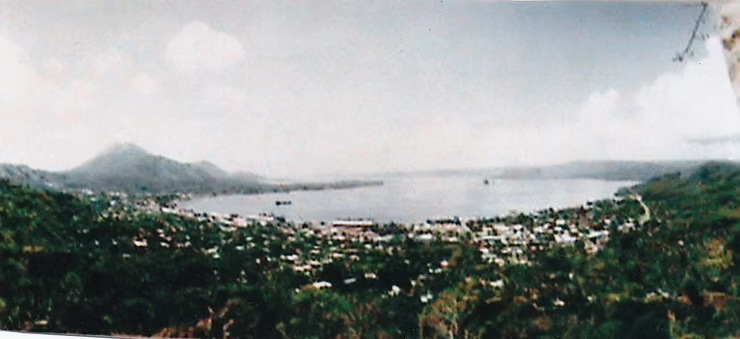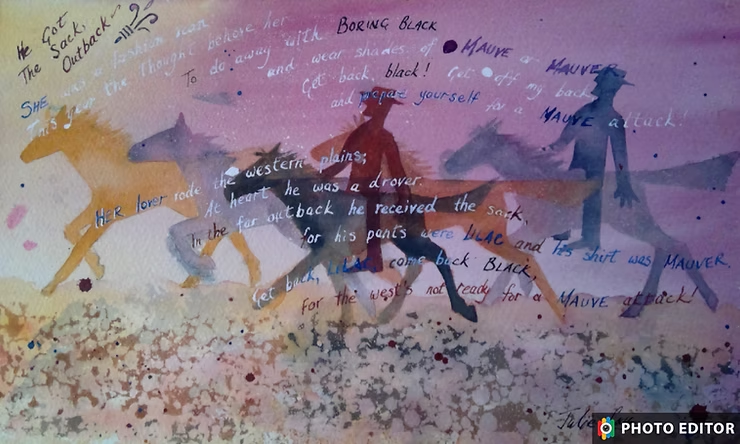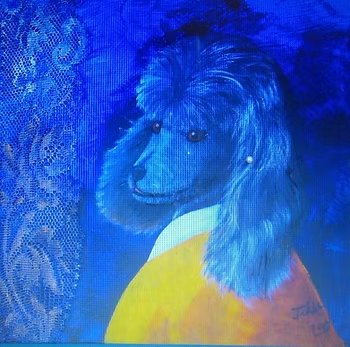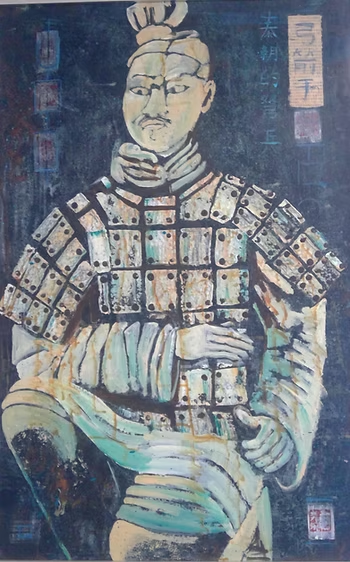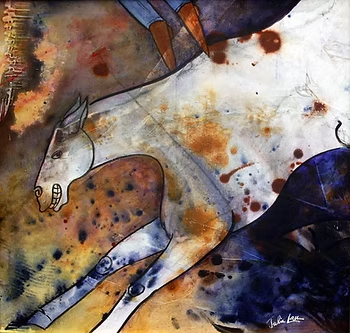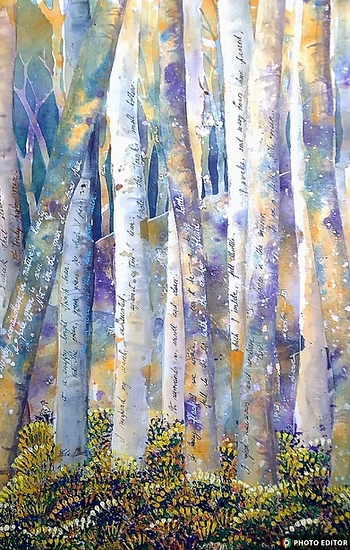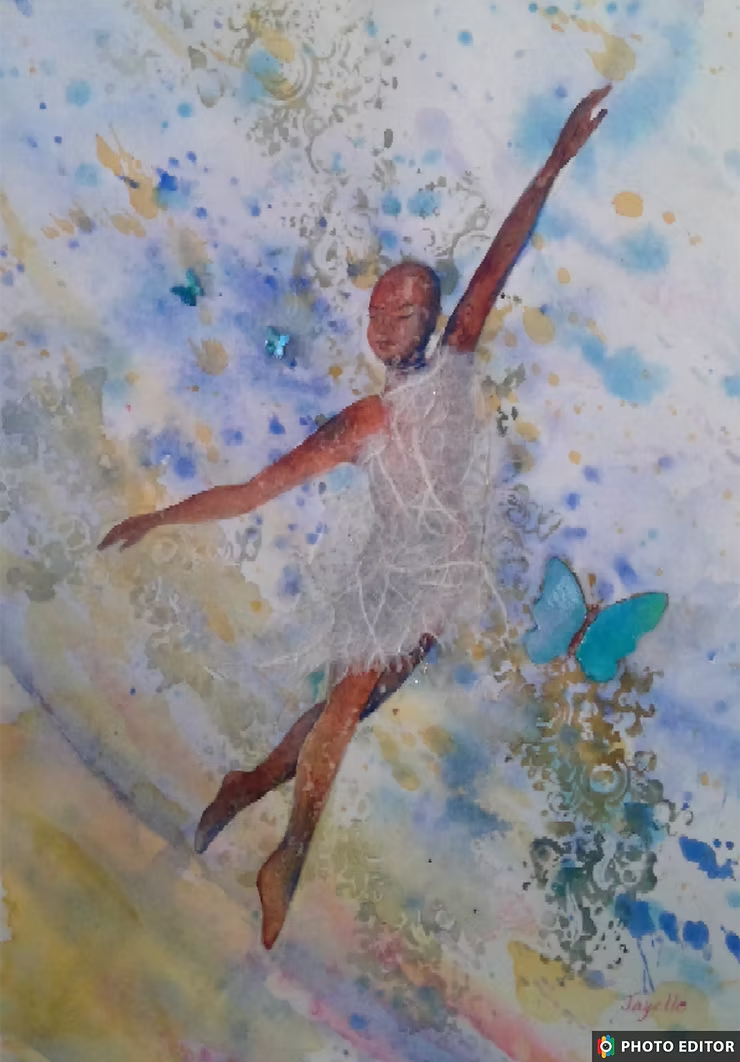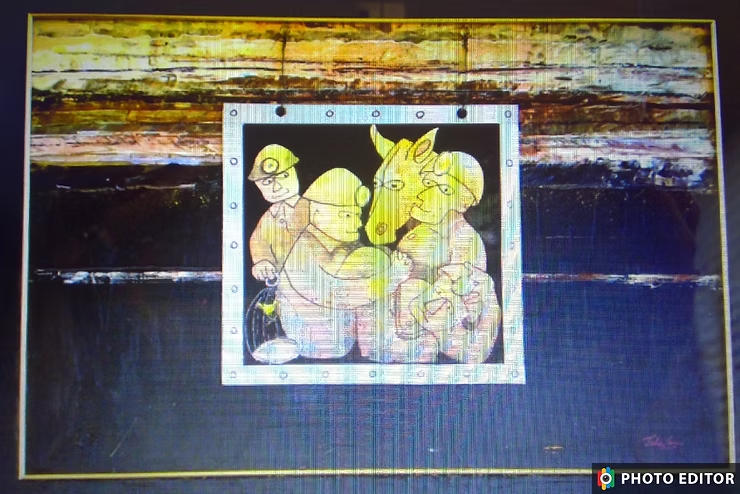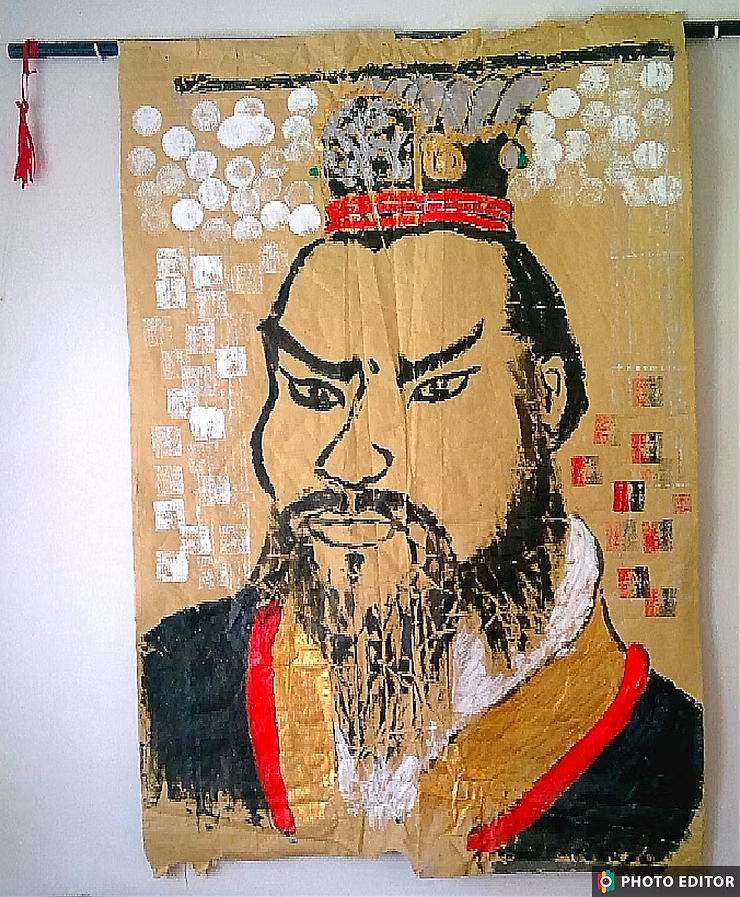COMBINING POETRY AND PAINTING has become my latest project. Here is Mauver (= more mauve: yes, I make up words too). I made my own stencils for the painting, cut out of an old x-ray. Some of the words are a bit hard to distinguish in the photo, so the poem is printed below. The original will be exhibited in the Toukley Gallery for the next month.
MAUVER
this year the thought behove her
to do away with boring black
and wear shades of mauve or mauver.
Get back, black! Get off my back,
and prepare yourself for a mauve attack!
at heart he was a drover.
In the far outback he received the sack,
for his pants were lilac and his shirt was mauver.
Get back, lilac! Come back black,
For the west’s not ready for a mauve attack.
For the story component I am beginning to serialise The Unlikely One, an essay I have entered in an international essay competition. Fingers crossed! The story was told to me by a person who lived through the event, and it is absolutely true. I knew the unlikely one personally; he was a pleasant, modest and gentlemanly man who gave never a hint of his heroic past.
The Unlikely One
CHIN HOI MIN was the epitome of a cartoon Chinaman. He had a flat round face, buck teeth above a receding chin, and a goofy grin. Thick spectacles distorted his eyes into a series of concentric glassy rings, and spikes of badly cut hair stuck out from his round head at uncontrollable angles. He walked slowly with a kind of shuffle which suggested that his feet were not quite lining up as they should.
Chin Hoi Min also had the misfortune to be one of a population of several hundred Chinese indentured labourers who, with their wives and offspring, were originally brought to Rabaul by German colonists. At the conclusion of the first Great War the newly-formed League of Nations dispossessed Germany of all colonies, and handed New Guinea and its islands to Australia to be guided towards independence.
Most of the Chinese population stayed, having nowhere better to go, and invested their meagre hard-won savings in little businesses, chiefly in rows of identical trade stores all stocking identical items: basic foodstuffs, tools and cloth, catering for the local native population.
In 1942 the Japanese military invaded and spoilt everything. The local Tolais fled into the jungle, and behind them ran the resident Australian garrison, the 2nd 22nd, many to die of starvation in abandoned native gardens surrounded by native foods they did not recognise.
The Chinese, now having no choice at all, stayed. Beyond depriving them of their three political leaders, officials of the nationalist Chinese Kuomintang movement, the invaders were not unkind. It would be suicide to stay in the town, the Japanese officials advised them, as it was a sitting target for the American planes which made daily sorties shooting and bombing.
Rabaul was constructed around the landward edge of a enormous, perfectly circular collapsed caldera, the rim of an ancient volcano. It formed an ideal port for shipping of any size, sheltered from most weather but very exposed to the eyes of an enemy.
The hills surrounding the harbour were composed of pumice, a late-stage volcanic rock formed from gaseous explosions of viscous lava which cooled at the surface forming a light-weight, finely-honeycombed, easily-carved but extremely competent substance. In very short time these hills were riddled with a network of tunnels and chambers.
Their new masters presented the homeless Chinese with a suitable valley of their own, and advised them to start tunnelling. And planting.
to be continued in Blog #18
